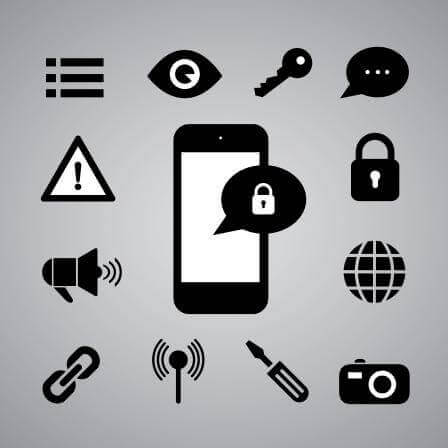4 Tips to Control Your Privacy with Phone Settings
Your phone knows a lot about you—maybe too much. Here’s some tips to manage your personal information with phone settings.
Have you ever been walking down the street when a notification pops up on your phone about a store you were driving by? Has Facebook ever told you that one of your friends was attending an event near you that day?
Consider how much information your phone has regarding your interests, location, and more. Between your text messages, phone calls, photos, browser history, apps, news, social media accounts, map locations, voicemails, and even your reminders, your phone knows a lot about you.
In many cases, phones have become an integral part of our lives, and often are never more than a few feet from us at any point in time. Sometimes in an interconnected world full of photo tagging, and location pinning, it’s hard to believe privacy isn’t dead.
Nevertheless, here are a few tips to reclaim your privacy using the settings on your phone.
Location Services
Location settings are one of the first settings on your phone that you should be aware of if your concern is privacy. Just as a quick note, any of the settings that I mention in this episode will be linked to in the show notes of this episode. I’ll include both links to Android phones and iPhones because their feature set is so similar and they make up most of the smartphone market.
Location services are the settings in your phone that determine whether or not a particular app or part of your phone can use your location. If you flip through some of the things that you can disable, you will see that while you can turn off all location tracking, there are certain apps that you’ll probably want to let use your location, such as any mapping software that you use for directions.
If you disable all location services, none of your location based apps will work. I personally let my mapping apps have access to my location. If you have ever “allowed” an app to use your location, the app will show up in the list and you can enable or disable it temporarily.
Here is how you can disable location services on Android or iOS.
Set a Password
The next setting you should take a look at is your password. You should always have a password to protect the information on your phone. I personally like the fingerprint sensors that the iPhone and some Android phones have because they are very difficult to trick, and someone wanting to get into your phone can’t simply guess your password.
I also use this in conjunction with a longer password. Phones with fingerprint readers also have a backup password that is normally 4 digits. You can almost always use a 6 digit password, a password that has letters and numbers, or if you are using Android, a pattern of some sort. I generally make this back-up password at least 12 characters long because I use it infrequently since the fingerprint is my primary login.
Now you may be thinking, “Jeez Eric, that sounds like a lot of security. I’m not guarding Fort Knox! What would someone want with my phone?” I get this question a lot. People seem to say, “I have no information worth having.” But ask anybody who has had their identity stolen, and I bet they will tell you otherwise.
Phones contain an incredible amount of information about you: birthdays, contacts, emails, you name it. A simple password may be the difference between a stolen phone, and your identity being stolen. It’s simple to set up one time and will keep out thieves and sneaks.
Along with this you should also set your phone to lock quickly. Phones will vary how long it takes for them to be inactive in order for them to lock. I recommend 1 minute at a minimum.
Here’s how to set a password on an Android and here’s how to do it on iOS.
Siri and Google Now
One thing that most people don’t realize is how much information is available through Siri and Google Now. If you’re not familiar with either of these, they are virtual assistants you can ask to do any number of tasks, from setting reminders to getting you directions home. Even if your phone is locked, by default you can still access them. This is so that you can use them while driving, or so you simply don’t have to go through the process of unlocking your phone every time you want to use them.
One reason that you may want to disable Siri or Google Now when your phone is locked comes down to what can be accessed with them. Simply asking “Give me directions home,” “Read my text messages aloud,” or “What’s on my calendar today?” could give out information about yourself you would rather someone not have.
Here’s more tips for using Siri and Google Now on iOS and Android.
Limit Ad Tracking
By default, most phones will have some type of ad tracking in them. This will take things such as your location, web history, and apps in order to direct you to advertisements that are more tailored to you. Some people like this because the advertisements are helpful, or help them find something that they are looking for, or maybe even find a coupon.
I, on the other hand, find it creepy, and also funny to see what ads have been “targeted” to me. Luckily, this is an incredibly easy setting to turn off in the settings of your phone. Most people don’t even know that it exists. Check out the following links to learn how to remove advertisement tracking from your iOS and Android phone.
Well, that’s it for today! Be sure to check out all my earlier episodes at techtalker.quickanddirtytips.com. And if you have further questions about this podcast or want to make a suggestion for a future episode, post them on Facebook QDTtechtalker.
Until next time, I’m the Tech Talker, keeping technology simple!





